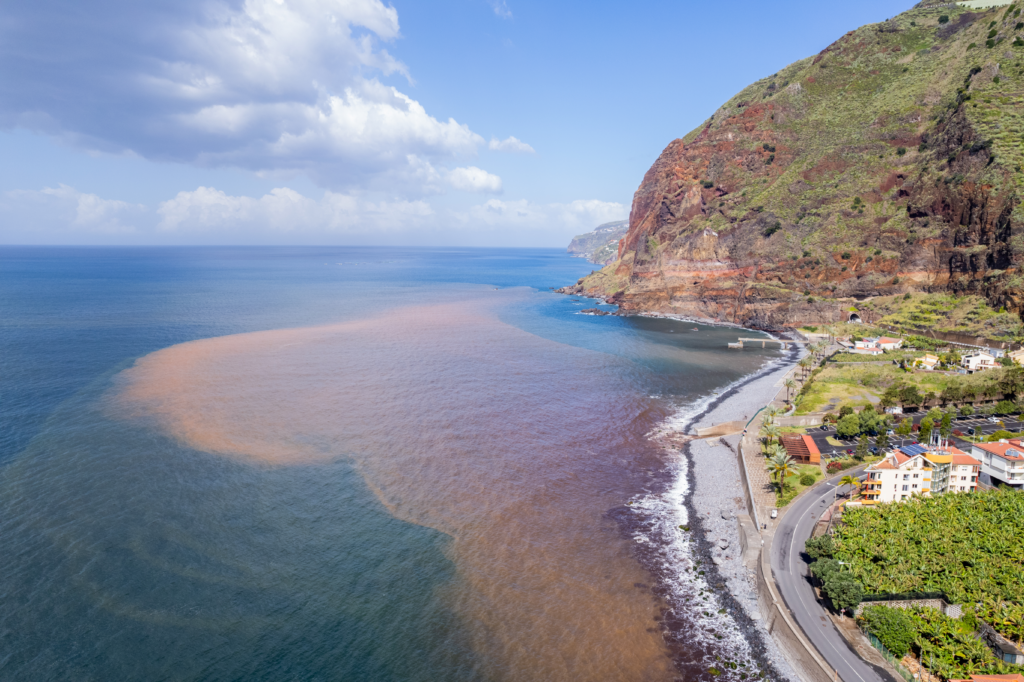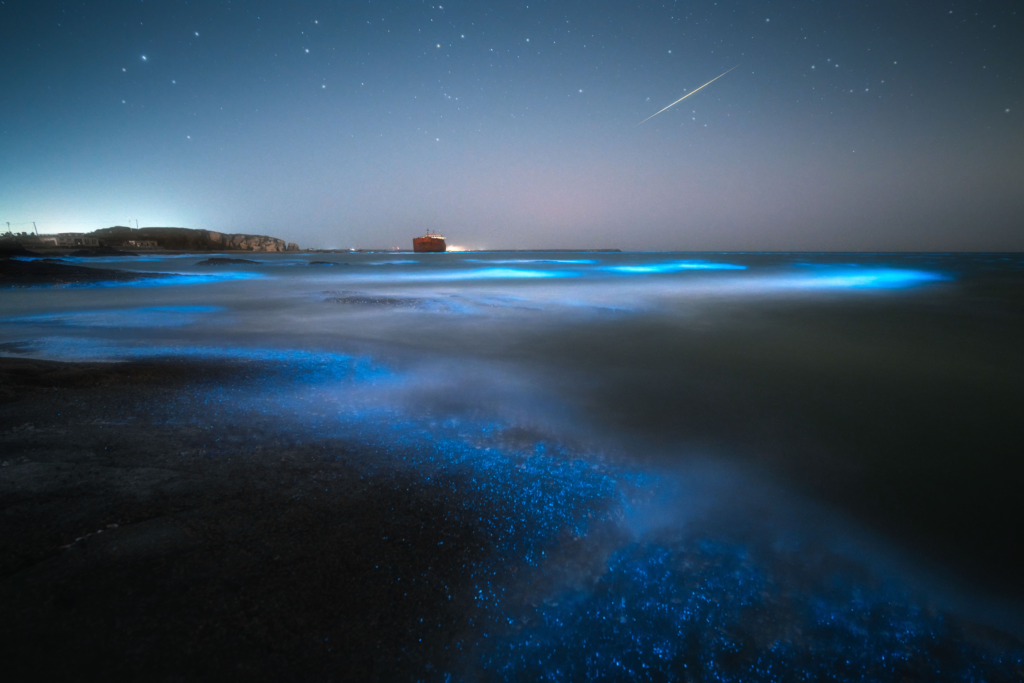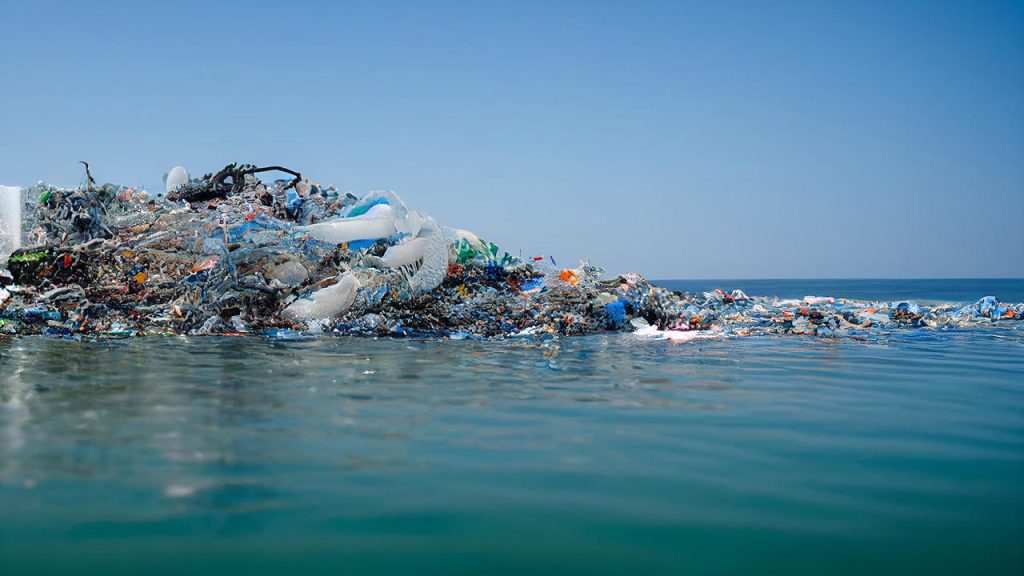Glowing Waves: The Mystery of Red Tides

Picture this: you’re walking along the shoreline, enjoying the gentle lull of the waves and the salty breeze of the ocean. But as you gaze out to sea, you notice something unsettling—a vast expanse of water, tinged with an ominous shade of red. This striking scene is not a product of your imagination but a natural phenomenon known as a red tide. In this article, we delve into the mysteries of red tides—exploring what they are, what they look like, when and how they happen, and when you can witness these captivating yet concerning events.
Despite their name, red tides are not always red, nor are they composed of tides in the traditional sense.

Rather, red tides refer to blooms of microscopic algae (known as phytoplankton) that can discolour the water, giving it a reddish, brownish, or even greenish hue. These blooms are typically caused by certain species of algae that produce pigments such as chlorophyll and carotenoids, which can tint the water when present in high concentrations.
In addition to their striking appearance during the day, red tides can also exhibit a mesmerising phenomenon known as bioluminescence, especially when disturbed at night. Certain species of algae responsible for red tides, such as dinoflagellates, possess the ability to emit light in response to mechanical stimulation. When these microscopic organisms are disturbed by waves or movement in the water, they release a burst of blue-green light, creating a magical display of underwater fireworks. This bioluminescent glow can transform the ocean into a shimmering sea of stars, with each ripple and wave leaving behind a trail of ethereal light.

The sight of a red tide aglow with bioluminescence is a truly unforgettable experience, captivating both scientists and spectators alike with its otherworldly beauty.
The appearance of a red tide can vary depending on factors such as the species of algae involved, the concentration of algae present, and environmental conditions such as sunlight and water temperature. In some cases, a red tide may manifest as a subtle discoloration of the water, giving it a slightly reddish or brownish tint that is visible from the shore or from above. In other instances, particularly during large blooms, the water may take on a more intense and vivid hue, resembling a thick soup of red or rust-coloured algae.
While red tides are a natural occurrence, they can have significant ecological and economic impacts, particularly when they occur in coastal areas. Some species of algae that contribute to red tides are capable of producing toxins that can harm marine life and pose risks to human health. Additionally, red tides can deplete oxygen levels in the water, leading to fish kills and other negative consequences for aquatic ecosystems.
Red tides can occur in both coastal and open ocean environments, although they are most commonly associated with nutrient-rich coastal waters. These blooms are typically triggered by a combination of factors, including nutrient availability, sunlight, water temperature, and ocean currents. In coastal areas, runoff from land-based sources such as agricultural runoff and sewage discharge can introduce excess nutrients (such as nitrogen and phosphorus) into the water, fuelling the growth of algae.
Once conditions are favourable, certain species of algae can undergo rapid population growth, or “blooming,” leading to the formation of dense patches or “blooms” of algae. These blooms are often short lived, but can persist for weeks or months, depending on environmental conditions and the availability of nutrients. During this time, the algae may reproduce rapidly, releasing toxins into the water and discolouring the surrounding seawater. They can occur at any time of year, although they are most common during the warmer months when water temperatures are conducive to algal growth. In some regions, such as the Gulf of Mexico and the west coast of the United States, red tides are a recurring phenomenon that typically occurs between late spring and early fall.
If you’re hoping to catch a glimpse of a red tide, coastal areas with high levels of nutrient runoff and warm water temperatures are the most likely locations to encounter these blooms. However, it’s important to exercise caution and follow any advisories or warnings issued by local authorities, as red tides can pose risks to both human health and marine life.
Red tides are a fascinating yet concerning phenomenon that occur in oceans and coastal waters around the world. While these blooms of algae can create striking visual displays, they can also have negative impacts on marine ecosystems and human health. By understanding what red tides are, what they look like, when and how they happen, and when you can see them, we can better appreciate the complexity of the natural world and the delicate balance of life in the ocean.
So the next time you find yourself by the seaside, keep an eye out for the tell-tale signs of a red tide, and if you see one, maybe stay up late that night and wait for the Aurora Borealis of the oceans.
But remember to tread carefully, as nature’s beauty can sometimes come with hidden dangers.





